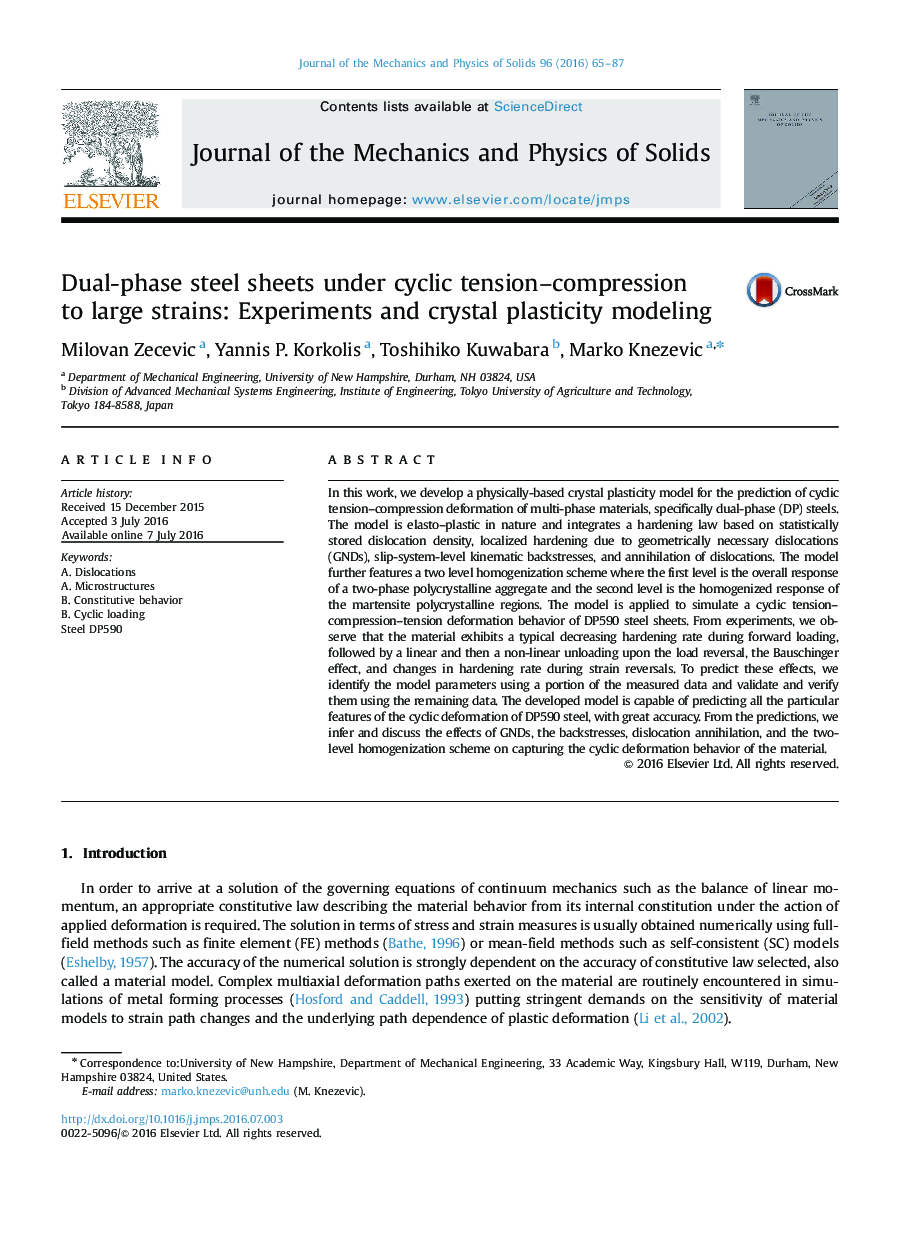| کد مقاله | کد نشریه | سال انتشار | مقاله انگلیسی | نسخه تمام متن |
|---|---|---|---|---|
| 797713 | 1467047 | 2016 | 23 صفحه PDF | دانلود رایگان |
• Cyclic tension–compression to large plastic strains of dual-phase steel sheets is characterized.
• A new model for the prediction of cyclic deformation of two-phase metals is developed.
• The model is physically-based accounting for statistically stored and geometrically necessary dislocations.
• The model further features slip-system-level backstresses, annihilation of dislocations, and two-level homogenization.
• The model predicts hardening rates, non-linear unloading, and Bauschinger effect of DP 590 steel.
In this work, we develop a physically-based crystal plasticity model for the prediction of cyclic tension–compression deformation of multi-phase materials, specifically dual-phase (DP) steels. The model is elasto–plastic in nature and integrates a hardening law based on statistically stored dislocation density, localized hardening due to geometrically necessary dislocations (GNDs), slip-system-level kinematic backstresses, and annihilation of dislocations. The model further features a two level homogenization scheme where the first level is the overall response of a two-phase polycrystalline aggregate and the second level is the homogenized response of the martensite polycrystalline regions. The model is applied to simulate a cyclic tension–compression–tension deformation behavior of DP590 steel sheets. From experiments, we observe that the material exhibits a typical decreasing hardening rate during forward loading, followed by a linear and then a non-linear unloading upon the load reversal, the Bauschinger effect, and changes in hardening rate during strain reversals. To predict these effects, we identify the model parameters using a portion of the measured data and validate and verify them using the remaining data. The developed model is capable of predicting all the particular features of the cyclic deformation of DP590 steel, with great accuracy. From the predictions, we infer and discuss the effects of GNDs, the backstresses, dislocation annihilation, and the two-level homogenization scheme on capturing the cyclic deformation behavior of the material.
Journal: Journal of the Mechanics and Physics of Solids - Volume 96, November 2016, Pages 65–87
